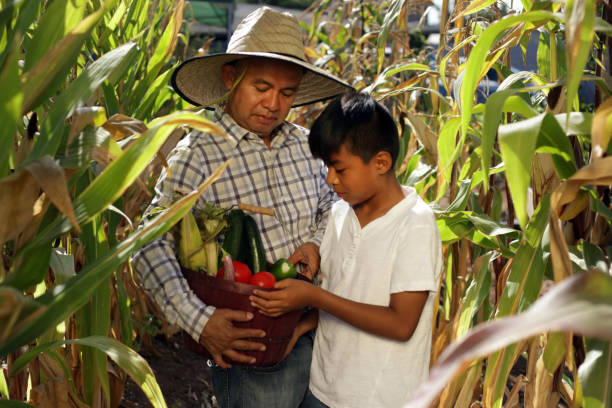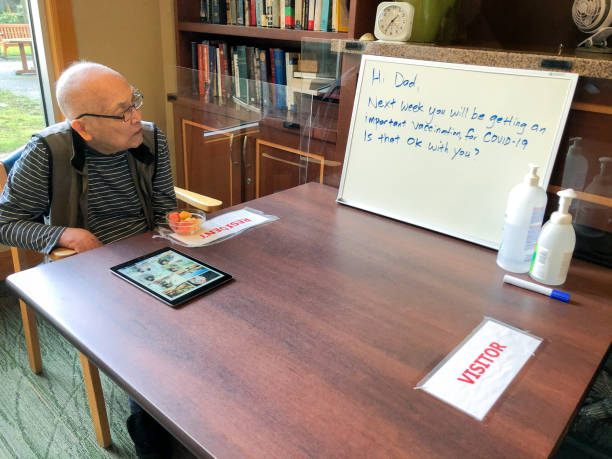Message Design


The COVID-19 pandemic has exposed deep health inequities in the U.S. Vulnerable populations have been disproportionately impacted by higher rates of COVID-19 infection, hospitalization, and mortality. The White House has put equity at the center of the response to the pandemic and subsequent economic crisis. For the U.S. to reach herd immunity, it is essential to focus on communication surrounding vaccine hesitancy, mistrust in government, lack of access, and other equity issues facing underserved communities and vulnerable population. This section of the playbook will help you craft efficient and effective counter responses to mis/disinformation in a fast-changing environment. It is unique in that the approach is specifically tailored for communicating with vulnerable and underserved communities.

Public health communication campaigns should always consider levels of health literacy early in the development process. Health literacy is the degree to which individuals can obtain, process, and understand basic health information needed to make appropriate health choices.
Communication Implications
Vulnerable populations such as older adults, minorities, those with limited English proficiency, and underserved communities are at risk for having lower health literacy rates. There are ways to craft messages that resonate across all levels of health literacy:
- Use everyday words (example: vaccines are commonly called ‘shots’; instead of saying “two doses” of the vaccine, say that they will need to receive “two shots “x” weeks apart”.
- Use the native language of the target audience when developing health messages.
- Use short, concise sentences.
- Use clear and direct calls to action (example: Get a COVID-19 vaccine to help save lives.).
- Make adequate use of white space to break up text.
- Use simple videos, photos, or graphics to convey the message.
- Run your messages through the CDC’s Clear Communication Index. It can provide a health literacy ‘score’ for both short and long form communication, which allows you to adjust if needed.

Understanding and acknowledging the reasons behind an individual or group’s skepticism about vaccines is critical to the design of COVID19 vaccine communication efforts.
Communication Implications
Historical discrimination, injustice, and unethical medical practices have disproportionately affected minority communities. These traumas remain deeply woven into collective memory. These communities are, understandably, deeply distrusting of government and healthcare systems in the U.S. When communicating with these community members:
- Partner with trusted, in-community members or opinion leaders.
- Rely on information and discussions from in-group minority scientists and healthcare professionals who were a part of the COVID19 vaccines development.
- Incorporate personal stories from community members who received the vaccine (and why).

The best communicators are those who are curious and listen to seek understanding. The first step in designing health messaging is listening to your community and understanding the beliefs, values and social norms that are unique to them. It is also important to understand their fears regarding the COVID-19 vaccine. These will influence and shape their decision as to whether or not to adopt the COVID-19 vaccine.
Communication Implications
- Develop profiles for the different communities in your geographic area so that you can customize the messages for each community specific to their values, beliefs, and social norms.
- Consider including representative(s) in a peer health advisory board to better understand their community’s beliefs, values and social norms to inform messaging and communication strategy development and to also create a sense of trust with the community.
- For example, if the social norm of a community is to do things for the greater good of the community, avoid using messages that focus on the individual advantage of getting the vaccine. Instead use messaging that emphasizes how adoption of the COVID-19 vaccine will protect their community from the virus and preserve the community’s health.

Messages of fear and shame seldomly spur a change in health behavior. A judgmental tone can come across as divisive and patronizing and is not recommended for sensitive topics such as vaccination choice. Instead, focus on positive, competency-building emotions in messaging. The ability to protect one’s self, family, and community can be a strong motivator for vaccine uptake. Communicate to the public that they can help their community return to ‘normal’, improve the economy, and lessen suffering.
Communication Implications
Instead, focus on positive, competency-building emotions in messaging. The ability to protect one’s self, family, and community can be a strong motivator for vaccine uptake. Communicate to the public that they can help their community return to ‘normal’, improve the economy, and lessen suffering.

Once community members agree to vaccine adoption, the next step is to focus health communication so that they can successfully sign up for the vaccine. Online registrations, QR codes and other digital methods for signing up for the vaccine can be quick and convenient for those with moderate to high digital literacy. But for some vulnerable and underserved populations, where digital resources may not be as ubiquitous or digital literacy is low, this can be a barrier to vaccine adoption.
Communication Implications
- Offer different opportunities for community members to sign up for the COVID-19 vaccine. This can be an appointment system where people can sign up via mobile phone or landline. Other options are to set up vaccination sign-ups within the local community and have trusted volunteers from the community assist with the sign up process as needed.
- Ensure that the instructions are in plain language and in the appropriate language for the community being served. Leverage pictograms when providing instruction.
- Clearly and regularly communicate information/updates on any problems related to vaccine distribution, side effects and changes to the process.

In this section, we provide approaches to health message design for vulnerable populations that are based on various health communication theories and are presented in an easy to understand format. These different approaches may be considered in countering mis/disinformation identified in the Social Listening section of the Playbook. The message design takes into account the persuasion tactics used in the mis/disinformation posts and leveraging them in the development of the counter response.
Inoculation
- Inoculation is a counter-persuasion method that consists of two parts:1) Threat – Telling a person or group of people about potential challenges to their health attitudes and beliefs; and 2) raising the potential challenge to existing attitudes and beliefs, and disproving them.
- Example Message: “I understand that protecting your family and keeping them safe from COVID-19 are most important to you.” You may see or hear messages that tell you that the COVID-19 vaccines are unsafe and will hurt your family. But in fact, the vaccines have been thoroughly tested and one of the best ways to protect your family.
Persuasive Health Message
- There are four parts to creating a persuasive message:
- Threat message. Increase the audience’s perceived susceptibility to COVID-19.
- Efficacy message. Persuade the audience that they can protect themselves from severe illness or even death by getting vaccinated (self-efficacy).
- Cues. Cues are variables that can indirectly persuade an audience such as a celebrity spokesperson.
- Audience Profile. We have already discussed creating an audience profile in the Audience Analysis section of the Playbook where you research and understand values, beliefs, social determinants of health and environmental factors that make up your audience. This is the only way of ensuring that your messages will resonate with a specific population.
- Example: [Messenger: Church leader or community leader]. COVID-19 infection and death rates have been the highest amongst the African American community. But by getting the COVID-19 vaccine, you can protect you and your loved ones from becoming sick with COVID-19.
Positive Affect
- Positive affect or prosocial messages focus on feelings that help a person to feel good about him/herself and promotes feelings such as happiness and joy in order to influence positive health outcomes. Positive affect messages can promote positive attitudes about perform a certain health behavior. For example, for vaccine adoption, the message might focus on altruism and how the receiver of the message can protect their community or their family by taking the COVID-19 vaccine.
- Example: Remember the time when you could celebrate good times with family and friends and not be afraid that you might get sick with COVID-19 or worse yet, expose them to COVID-19? By choosing to get the COVID-19 vaccine, you are helping your family and your community get back to those happier times where you can enjoy life to the fullest and share it with those that you love.
Fear Appeals and Self-efficacy
- Note, the use of fear messages that move a person or community to adopt a positive health behavior can backfire if the message is severe and does not promote feelings of self-efficacy where the receiver of the message feels that they have the power to make the change towards the positive health outcome. Health communicators should consider moderate fear appeals combined with high self-efficacy messaging and messaging that evokes hope to achieve the greatest behavior change.
- Example: Many of the families in our community have lost loved ones to COVID-19. You may also have lost someone, who you were very close to. The best thing that you can do to protect yourself and those you care about from COVID-19 is to get vaccinated. Check your local health department, pharmacies, hospitals and other locations to sign up for the vaccine. [Note: It is best to provide the specific sign up information or a phone number or URL to additional information] .
Visit the next section, Message Delivery, to explore considerations when planning who will communicate your message and how it will reach your audience.

